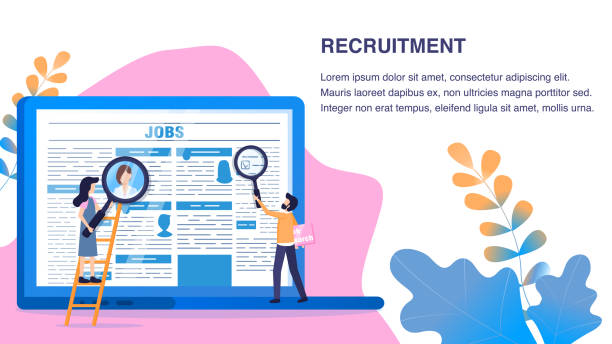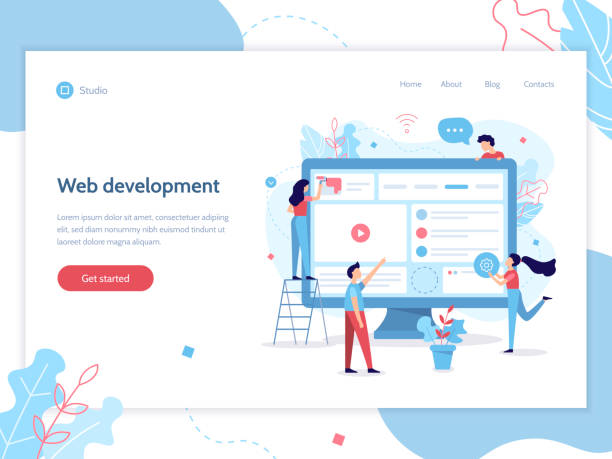The Unparalleled Importance of Multilingual Website Design in the Age of Globalization
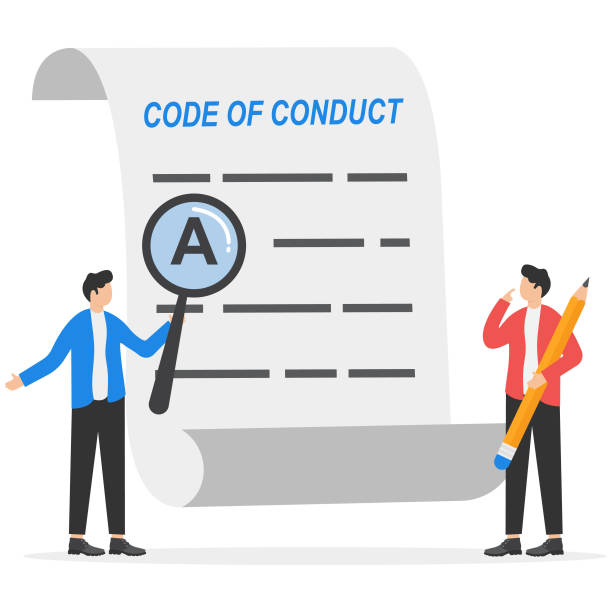
In today’s world, where geographical boundaries have less meaning in the virtual space, #multilingual website design# is no longer a luxury option, but rather a strategic necessity for any business that dreams of expanding its operations into global markets.
Your website is the digital storefront of your business, and when this storefront is accessible in multiple languages, it means opening new doors to millions of potential users worldwide.
This approach allows you to communicate with your audience in their own language, resulting in increased trust, improved user experience, and ultimately, significant growth in sales and customer conversion.
An efficient multilingual website not only helps you penetrate new markets but also enhances your brand’s international credibility.
Imagine a potential customer in another country visiting your website and being able to read the content in their native language; this experience creates a sense of belonging and comfort that goes far beyond simple machine translation.
In fact, this type of website design demonstrates your respect for the culture and language of your audience.
Therefore, embarking on the path of international website design is a crucial step for any ambitious business that wants to compete on the global stage.
Did you know a weak corporate website costs you many opportunities daily? Solve this problem forever with professional corporate website design by Rasaweb!
✅ Create a powerful and reliable image for your brand
✅ Attract targeted new customers and increase sales
⚡ [Get Free Website Design Consultation]
Challenges and Technical Considerations in Creating Multilingual Websites
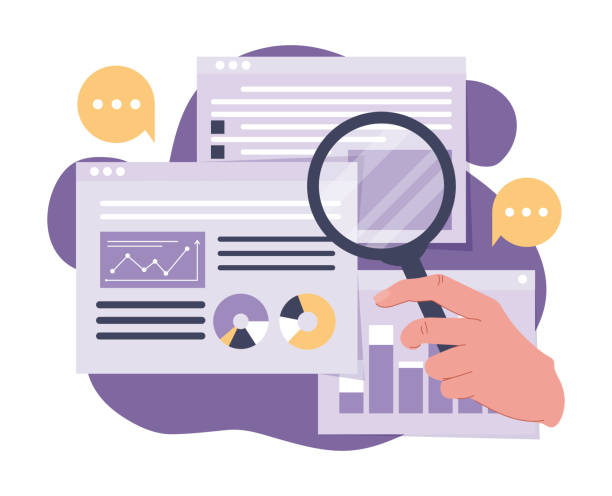
When it comes to multilingual website design, special attention must be paid to technical aspects.
This process is not limited to content translation; it requires specific engineering approaches to ensure proper functionality and search engine optimization.
One of the first important decisions is the choice of URL structure: using subdomains (e.g., fr.example.com), subdirectories (e.g., example.com/fr/), or country-code top-level domains (ccTLDs) (e.g., example.fr).
Each of these methods has its own advantages and disadvantages in terms of SEO and management.
For instance, subdirectories are generally simpler to manage for SEO and inherit the main domain’s authority, while ccTLDs can send a stronger signal to search engines about geographic targeting.
Furthermore, the correct use of hreflang tags is crucial for informing search engines about different language versions of a page.
These tags help display the correct content to users in the appropriate language and region and prevent duplicate content issues.
Choosing a Content Management System (CMS) that fully supports multilingual capabilities, such as WordPress with specialized plugins, Drupal, or Joomla, is a fundamental step.
Additionally, attention must be paid to details such as text direction (LTR for English, RTL for Persian), fonts, and character encoding to ensure a seamless and flawless user experience across all languages.
Managing the database for multilingual content is also a challenge that needs to be carefully designed so that information is stored and retrieved in an organized and accessible manner.
All these technical points form the cornerstone of a successful multilingual website design.
Advantages and Challenges of International Website Design and Comparison Tables
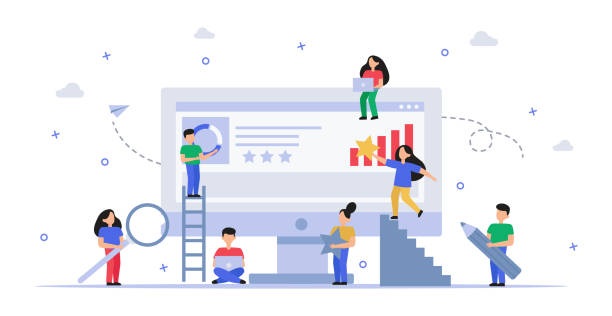
Multilingual website design allows you to convey your message to a global audience, but like any major project, it comes with both advantages and challenges.
Key benefits include increased access to new markets, improved user experience by providing content in users’ native languages, and enhanced international SEO potential that can drive more organic traffic to your site.
When users find content in their own language, their retention and engagement rates significantly increase.
This is especially crucial for e-commerce and service websites, as it builds greater trust with customers and increases the likelihood of purchase.
However, there are also challenges that need to be addressed.
The most significant among them is translation quality; machine translation rarely matches the quality and accuracy of human and localized translations and can harm brand credibility.
Initial and ongoing maintenance costs, content updates in multiple languages, and more complex SEO management are other challenges.
Choosing the right translation service provider and ensuring that the content is not just translated but also localized (i.e., aligned with the target audience’s culture) requires careful planning and sufficient resources.
To better understand, a table comparing the advantages and disadvantages of multilingual website design is provided below:
| Advantages | Disadvantages/Challenges |
|---|---|
| Increased access to global markets | High initial and maintenance costs |
| Improved User Experience (UX) | Complexity of international SEO |
| Increased brand credibility and customer trust | Need for quality translation and localization |
| Higher potential for organic traffic growth | Complex content management and updates |
| Reduced Bounce Rate | Need for technical expertise in implementation |
Understanding these strengths and weaknesses will help you approach a multilingual website design project with a clearer perspective and be prepared for the challenges ahead.
Is Machine Translation Sufficient for Multilingual Website Design? Myths and Realities

One of the key questions raised in the initial stages of multilingual website design is whether machine translations (like Google Translate) can be trusted for website content? The short answer is: No, it is absolutely not enough.
The belief that machine translation tools can replace human translators and localizers is a major myth that can cause irreparable damage to your business’s online credibility and success.
Although machine translation has made significant progress in recent years, it is still unable to grasp cultural nuances, local idioms, tone of voice, or even humor.
Content translated by a machine often appears dry, unnatural, and sometimes even incorrect.
This can lead to a loss of user trust and drive them away from your website.
For example, some words might have a suitable meaning in one language but carry negative or even offensive connotations in another.
A professional localizer not only translates words but also aligns the content with the culture, customs, and social norms of the target community.
This localization process includes changes in images, colors, sentence structure, and even page layout to match the local audience’s taste.
In fact, the goal of creating a multilingual website is for the user to feel that the website was designed for them and in their language from the outset, rather than merely being translated.
Therefore, to provide a flawless user experience and maintain brand professionalism, investing in human translation and localization is essential and an undeniable necessity in the multilingual website design process.
Are you frustrated with your online store’s low conversion rate?
Rasaweb is your definitive solution with professional e-commerce website design!
✅ Increase your sales and revenue
✅ Provide an unparalleled user experience for your customers
⚡ Get your free consultation now!
Choosing the Right Content Management System for Multilingual Website Design

One of the most important decisions in multilingual website design is choosing a Content Management System (CMS) that can effectively meet the specific needs of a website with multiple languages.
Not all CMSs inherently support multilingual capabilities, and some require plugins or more complex configurations.
An incorrect CMS choice can lead to serious future problems, including issues with content updates, URL management, and SEO optimization.
WordPress is one of the most popular CMSs globally and easily gains multilingual capabilities with powerful plugins like WPML (WordPress Multilingual Plugin) or Polylang.
WPML is a comprehensive solution that allows you to translate posts, pages, categories, tags, menus, and even widgets.
Polylang is also a lighter and free option that offers similar functionality.
These plugins help you manage your content separately for each language and set up appropriate URL structures.
Drupal natively offers stronger multilingual support and does not require extensive third-party plugins.
This CMS is a suitable option for large and complex projects with high customization needs.
Joomla, like Drupal, provides multilingual capabilities built-in and is suitable for medium to large websites.
When choosing a CMS, consider factors such as ease of use, hreflang support, the ability to translate all site elements (including themes and plugins), user management and access levels for translators, and platform stability and security.
Selecting a CMS that robustly supports multilingual website design will be the cornerstone of a successful and sustainable global website.
Latest Developments and News in International Website Design

The world of the web is rapidly evolving, and these changes also impact multilingual website design.
In recent years, we have witnessed significant advancements in artificial intelligence and machine learning, which hold great potential for revolutionizing the translation and localization process.
Companies like Google and Microsoft are continuously improving their machine translation tools, and although they are not yet a complete substitute for human translation, they can be useful in initial stages or for less critical content.
One of the recent trends is the increased use of Translation Management Systems (TMS).
These systems help businesses manage the translation process more organized and efficiently.
TMSs provide features such as Translation Memory, Glossaries, and quality control tools that significantly increase the speed and accuracy of translations.
These tools are vital for large multilingual website design projects with a lot of content.
Another development is the increased emphasis by search engines on local user experience.
Google and other engines, in addition to hreflang tags, also pay attention to other signals such as user dwell time, bounce rate, and content engagement in different language versions.
This means that merely translating content is not enough; the content must be truly useful and engaging for local audiences.
Also, with the widespread use of voice search and smart assistants, optimizing multilingual content for these platforms has become important.
User queries in voice search are often longer and more conversational, requiring a different approach to content creation and keywords for each language.
All these developments indicate that multilingual website design is not a static process and requires continuous updates and adaptation to new trends.
SEO Strategies for Multilingual Website Design and Optimization Checklist

SEO for a multilingual website has its own complexities, but if executed correctly, it can lead to a significant increase in organic traffic from different parts of the world.
A common mistake made by many businesses is simply translating content and expecting to automatically rank in search engines.
However, for successful multilingual website design, a precise and targeted international SEO strategy is needed.
The first step is local keyword research.
Words popular in one language might have a different meaning or not be used at all in another.
Keyword research needs to be conducted separately for each language by native speakers and experts in that language.
Then, you must choose the appropriate URL structure (subdirectory, subdomain, or ccTLDs) and correctly use hreflang tags so that Google and other search engines can identify the different language versions of your pages and display them to the appropriate users.
These tags prevent duplicate content issues and help search engines display the best version for the user’s search query.
Below is an SEO checklist for multilingual website design:
| SEO Item | Description | Status |
|---|---|---|
| Local Keyword Research | Conduct separate keyword research for each language | ✅ |
| Hreflang Tag Implementation | Ensure correct use of hreflang tags on every page | ✅ |
| Choose Appropriate URL Structure | Subdirectory, subdomain, or country-specific domain | ✅ |
| Localize Meta Tags | Translate and localize Title and Meta Description for each language | ✅ |
| Multilingual Internal Linking | Link to correct language versions in internal links | ✅ |
| Google Search Console Settings | Geographic targeting in GSC for each domain/subdirectory | ✅ |
These essential tips will help you leverage the full potential of your multilingual website design in search engines and attract more targeted traffic.
Success Stories in the World of Multilingual Website Design and Inspiration

Perhaps you’d be interested to know how some of the world’s leading companies have achieved remarkable success through multilingual website design.
These companies have gone beyond simple translation, focusing on deep localization and providing a culturally relevant user experience.
For instance, Airbnb is a prominent example.
This global accommodation platform not only offers its website in dozens of languages but also localizes its content for each region and culture.
For example, accommodation suggestions, search filters, and even the tone of communication with users in each country are adjusted based on local preferences.
This approach has helped Airbnb build trust and comfort among users worldwide and become one of the biggest names in the tourism industry.
Spotify, the streaming music giant, is another example of a successful multilingual website design.
By providing localized user interfaces and content, along with playlists and music recommendations tailored to each country’s taste, the company has attracted millions of users worldwide.
Spotify has understood that music is a global phenomenon, but how it is consumed and enjoyed can vary across different cultures.
These examples show that multilingual website design is not just about word-for-word translation, but about a deep understanding of different audiences and cultures, and then providing content that resonates with them.
The success of these companies is a testament to the power of localization and investing in creating multilingual websites as a key strategy for global growth.
These stories can inspire other businesses to adopt a long-term view towards developing their websites for international markets and benefiting from its advantages.
Does your current corporate website not reflect your brand’s credibility and power as it should? Rasaweb solves this challenge for you with professional corporate website design.
✅ Increase visitor credibility and trust
✅ Attract more targeted customers
⚡ Click for a free consultation!
The Impact of Multilingual Website Design on User Experience and Global Expansion

The impact of multilingual website design on User Experience (UX) and global business expansion is beyond expectations.
When a user visits a website and finds content in their native language, they feel a greater sense of comfort and trust.
This directly affects the user’s retention rate on the site, the number of pages visited, and ultimately, the Conversion Rate.
Studies have shown that most internet users prefer to make purchases from websites that offer content and customer support in their own language.
This preference holds true even if the user is proficient in another language.
Deep localization, which includes adapting visual elements, date and time formats, currency, and even cultural concepts, elevates the user experience to a higher level.
For example, colors and symbols have different meanings in various cultures.
In a successful multilingual website design, these cultural details are also considered so that the website aligns with the local audience not only linguistically but also visually and in terms of content.
This approach makes users feel that your brand truly understands them and respects their needs.
From a global expansion perspective, creating a multilingual website opens doors to new markets that were previously inaccessible to you.
With the increasing number of internet users in non-English speaking countries, the growth potential in these markets is immense.
Brands that dare to enter these markets and invest in multilingual website design, offering a superior user experience, can capture a significant share of these emerging markets.
This approach not only boosts sales but also helps strengthen your brand’s position globally.
The Future of Multilingual Website Design: Voice, AI, and Hyper-Personalization

The future of multilingual website design is rapidly evolving, with new trends emerging that will make the user experience even more personal and localized.
One of the most significant of these trends is Voice Search.
With the proliferation of smart assistants like Alexa, Google Assistant, and Siri, users are increasingly interacting with websites through speech.
This requires optimizing multilingual content for conversational and question-based search queries, which vary across languages.
Multilingual website design in the future must be capable of responding to these types of searches in various languages.
Artificial Intelligence (AI) will play an increasing role in translation and localization.
While pure machine translation still doesn’t replace human translators, AI-powered tools are helping translators increase speed and accuracy.
More advanced AI systems will be able to preserve brand tone and style in translations and even provide hyper-personalized content based on user history and individual preferences.
This means that a multilingual website in the future can adapt content not only based on the user’s language but also on their precise geographical location, weather, time of day, and even their past interests.
Furthermore, multilingual content management is expected to become simpler through intelligent CMSs.
These systems can automatically suggest content for new languages, monitor translation quality, and even help identify new localization needs.
Ultimately, multilingual website design in the future will move towards providing a completely customized and rich experience for every user, regardless of their language or geographical location.
These developments will offer unparalleled opportunities for businesses to connect more deeply with global audiences.
Frequently Asked Questions
| Question | Answer |
|---|---|
| What is a multilingual website? | It is a website whose content is available to users in several different languages. |
| Why should we design a multilingual website? | To expand access to international audiences, increase website traffic, improve SEO in target markets, and provide a better user experience for non-Persian speaking users. |
| What are the main methods for implementing a multilingual website? | Using subdomains (e.g., en.mysite.com), using subdirectories (e.g., mysite.com/en/), and using separate domains for each language (e.g., mysite.com and mysite.de). |
| Which implementation method is better for SEO? | Generally, using subdirectories (language folders) is often recommended due to the transfer of the main domain’s authority to other languages. |
| What is the Hreflang tag and what is its use? | It is an HTML tag or HTTP Header that informs search engines which version of a page is suitable for which language or geographical region. This tag prevents Duplicate Content and improves SEO. |
| How is a Language Switcher designed? | Usually by using a dropdown menu, button, or flag in the site’s header or footer, which allows the user to select their desired language. |
| Is automatic (machine) translation suitable for a multilingual site? | No, machine translation usually has low quality and many errors that can harm the site’s credibility. Human translation or a combination of human translation and machine editing is recommended. |
| What are the most important SEO tips in multilingual website design? | Correct use of the Hreflang tag, having an appropriate URL structure for each language, translating titles and meta descriptions, translating main content, and internal linking between related language versions. |
| Should all website content be translated? | It depends on the strategy. Usually, the main and important content of the site should be translated. Less important sections or blogs may not require full translation. |
| What are the main challenges in multilingual website design? | Content management in different languages, translation costs, technical issues related to URLs and language tags, template compatibility with right-to-left (RTL) languages like Persian and Arabic, and multilingual SEO management. |
And other services by Rasaweb Advertising Agency in the field of advertising
Smart SEO: A fast and efficient solution to increase website traffic with a focus on attractive UI design.
Smart Conversion Rate Optimization: A fast and efficient solution to increase sales with a focus on optimizing key pages.
Smart Marketing Automation: Designed for businesses seeking to analyze customer behavior through user experience customization.
Smart Custom Software: A combination of creativity and technology to increase sales through intelligent data analysis.
Smart Data Analysis: A combination of creativity and technology to increase sales through the use of real data.
And over a hundred other services in the field of online advertising, advertising consultation, and organizational solutions
Internet Advertising | Advertising Strategy | Advertorials
Resources
Benefits of Multilingual Websites for Global BusinessesInternational SEO Strategies for Multilingual WebsitesBusiness Globalization Through Online PresenceProfessional and Targeted Website Design Guide
? Are you ready to transform your business in the online space? Rasaweb Afarin, specialists in comprehensive digital marketing solutions, including WordPress website design, helps you reach the peak and establish a powerful web presence.
📍 Tehran, Mirdamad Street, next to Bank Markazi, Kazeroon Jonubi Alley, Ramin Alley, No. 6

